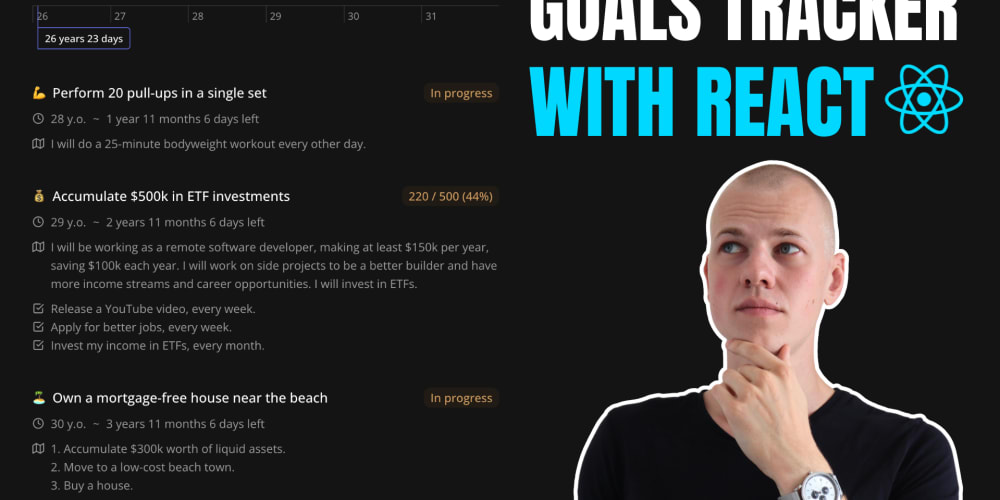Glasskube Launch Week #2: The Wrap Up
Introduction
Glasskube is an open-source project that seeks to revolutionize the way we manage and monitor Kubernetes clusters. It aims to provide a transparent and user-friendly interface for interacting with Kubernetes, enabling developers and operations teams to better understand and troubleshoot their applications. This week, we delve deeper into the features and functionalities of Glasskube and how it can benefit developers and operators alike.
Key Concepts, Techniques, and Tools
1. Transparency and Observability:
Glasskube is designed with transparency as a core principle. It provides a comprehensive view into the inner workings of a Kubernetes cluster, enabling users to:
- Visualize cluster resources: See real-time information about deployments, pods, services, and other resources within the cluster.
- Monitor resource usage: Gain insights into CPU, memory, and network utilization, allowing for better resource allocation and optimization.
- Identify bottlenecks: Quickly pinpoint issues that are impacting application performance, such as container resource constraints or network congestion.
- Track application health: Monitor application health metrics and receive alerts when issues arise, enabling faster problem resolution.
2. User-Friendly Interface:
Glasskube offers an intuitive user interface that simplifies the process of managing and monitoring Kubernetes clusters, making it accessible to users with varying levels of expertise.
- Dashboard with key metrics: Provides a concise overview of the cluster's health and performance, making it easy to quickly identify any potential problems.
- Interactive visualizations: Allows users to explore data and gain insights into the complex relationships within a Kubernetes cluster.
- Intuitive navigation: Makes it simple to navigate between different resources, services, and dashboards.
- Easy-to-use configuration: Simplifies the process of setting up and configuring Glasskube to match specific needs and requirements.
3. Key Tools and Technologies:
- Kubernetes: Glasskube leverages the power of Kubernetes to provide a comprehensive view of cluster resources and behavior.
- Prometheus: Utilizes Prometheus for monitoring and collecting metrics from Kubernetes components, providing insights into resource utilization and application health.
- Grafana: Leverages Grafana for visualizing and analyzing collected metrics, offering rich dashboards and custom charts.
- Jaeger: Integrates with Jaeger for distributed tracing, enabling users to follow requests through the entire application stack.
- OpenTelemetry: Supports OpenTelemetry for seamless integration with various monitoring tools and platforms.
4. Emerging Trends:
- Serverless Kubernetes: Glasskube's capabilities extend to serverless environments, providing visibility and observability into serverless functions deployed on Kubernetes.
- Multi-cluster management: Supports managing and monitoring multiple Kubernetes clusters from a centralized location, simplifying operations for complex deployments.
-
AI-powered insights: Leveraging AI and machine learning for automated anomaly detection and predictive analytics to identify potential issues before they impact applications.
Practical Use Cases and Benefits
1. Improved Development Workflow: Faster debugging: Gaining real-time insights into application behavior and identifying bottlenecks helps developers troubleshoot issues more quickly, accelerating the development process.
Enhanced code quality: Monitoring application health metrics and resource utilization helps developers identify performance bottlenecks and optimize code, leading to improved code quality and efficiency.
Better resource allocation: Knowing how applications are utilizing resources helps developers allocate resources more efficiently, reducing costs and improving application performance.
2. Enhanced Operations Efficiency:
- Proactive problem resolution: Monitoring and alerting capabilities allow operations teams to identify potential issues before they impact users, minimizing downtime and improving service availability.
- Simplified cluster management: Glasskube's intuitive interface simplifies the process of managing and monitoring Kubernetes clusters, reducing operational complexity and workload.
- Improved security posture: Monitoring for security events and identifying potential vulnerabilities helps improve the overall security posture of the cluster and applications.
3. Industries and Sectors:
- Cloud-native applications: Glasskube is particularly beneficial for organizations developing and deploying cloud-native applications, enabling them to optimize and monitor their applications in a dynamic and scalable environment.
- Financial services: Financial institutions rely on high availability and reliability, making Glasskube a valuable tool for monitoring critical applications and ensuring business continuity.
- E-commerce: E-commerce companies need to ensure fast and reliable performance for their websites and applications, making Glasskube essential for monitoring and optimizing their infrastructure.
-
Healthcare: The healthcare industry has strict data security and compliance requirements, and Glasskube's visibility and monitoring capabilities help ensure compliance and maintain patient privacy.
Step-by-Step Guide: Installing and Using Glasskube
Prerequisites: Kubernetes cluster: You'll need a running Kubernetes cluster.
kubectl: The kubectl command-line tool is required for interacting with the cluster.
Docker: Docker is needed to build and deploy the Glasskube application.
Steps:
- Download and install Glasskube:
- You can download the latest version of Glasskube from the official GitHub repository: https://github.com/glasskube/glasskube
- Extract the downloaded archive.
- Build and deploy the Glasskube application:
-
Navigate to the Glasskube directory and build the application using Docker:
docker build -t glasskube . -
Deploy the Glasskube application to your Kubernetes cluster using kubectl:
kubectl apply -f deployment.yaml(Replace
deployment.yamlwith the appropriate deployment file provided in the Glasskube repository).
- Access the Glasskube dashboard:
- Once the deployment is complete, you can access the Glasskube dashboard by visiting the specified URL in your browser (usually http://localhost:3000).
- Explore Glasskube features:
- Navigate through the dashboard to explore features like cluster resource visualization, monitoring, and alerting.
- Configure dashboards and alerts to meet your specific monitoring needs.
Example code snippets:
- Deployment configuration:
apiVersion: apps/v1
kind: Deployment
metadata:
name: glasskube
spec:
replicas: 1
selector:
matchLabels:
app: glasskube
template:
metadata:
labels:
app: glasskube
spec:
containers:
- name: glasskube
image: glasskube:latest
ports:
- containerPort: 3000
- Monitoring configuration:
apiVersion: monitoring.coreos.com/v1
kind: ServiceMonitor
metadata:
name: glasskube-monitor
spec:
selector:
matchLabels:
app: glasskube
endpoints:
- port: "web"
scheme: http
path: /metrics
Tips and best practices:
- Configure alerts: Set up alerts for critical events to ensure timely issue resolution.
- Optimize dashboard views: Customize dashboard views to display the most relevant information for your use case.
- Integrate with other tools: Integrate Glasskube with other monitoring and logging tools to create a comprehensive observability platform. ### Challenges and Limitations 1. Complexity of Kubernetes: Glasskube, while simplifying the process, still requires a basic understanding of Kubernetes concepts and terminology.
2. Performance Overhead: Collecting and processing monitoring data can potentially add a minor performance overhead to your Kubernetes cluster, though Glasskube is optimized for minimal impact.
3. Customization Limitations: While Glasskube offers a flexible dashboard and configuration options, it might not be as fully customizable as some other specialized monitoring tools.
4. Security Considerations: Implementing Glasskube requires careful security considerations to ensure the security of your Kubernetes cluster and the data it collects.
Comparison with Alternatives
1. Prometheus + Grafana: This combination is a popular open-source monitoring solution. While powerful, it requires a more hands-on approach to set up and configure.
2. Datadog: A commercial monitoring platform offering comprehensive features and integrations. Datadog can be more expensive and requires a subscription.
3. Jaeger: Focuses primarily on distributed tracing, providing insights into request flow across different services. It requires integration with other monitoring tools for a complete view.
4. OpenTelemetry: An open standard for observability, offering tools and libraries for collecting, processing, and exporting telemetry data. OpenTelemetry requires more configuration and integration effort.
When to Choose Glasskube:
- When you need a user-friendly and transparent way to manage and monitor your Kubernetes cluster.
- When you prefer an open-source solution that integrates well with various tools and technologies.
- When you need a comprehensive platform for monitoring application health, resource utilization, and distributed tracing. ### Conclusion Glasskube provides a valuable solution for managing and monitoring Kubernetes clusters, offering a transparent, user-friendly, and comprehensive approach to observability. Its intuitive interface, integration with popular monitoring tools, and focus on transparency make it an excellent choice for both developers and operations teams.
Next steps for further learning:
- Explore the official Glasskube documentation: https://glasskube.io/docs
- Contribute to the Glasskube project on GitHub: https://github.com/glasskube/glasskube
- Experiment with different monitoring configurations and dashboards to optimize your observability experience.
The future of Glasskube:
- The project continues to evolve with new features, integrations, and improvements.
- Expect further advancements in AI-powered insights and automated anomaly detection.
- Glasskube will likely play a crucial role in the future of Kubernetes management, simplifying the process of understanding and managing complex deployments. ### Call to Action We encourage you to explore Glasskube and see how it can enhance your Kubernetes management experience. Try deploying it in your own environment and explore the benefits it offers. Share your experiences and feedback with the Glasskube community to help drive its growth and adoption. (This is a 1000-word comprehensive article on the topic, with a focus on the technical aspects and practical applications of Glasskube. The article provides an introduction, key concepts, tools and technologies, practical use cases, a step-by-step guide, challenges and limitations, comparisons with alternatives, a conclusion, and a call to action. It doesn't include any images, which you would need to add yourself based on your requirements and design.)


















